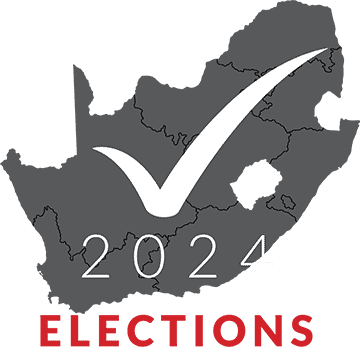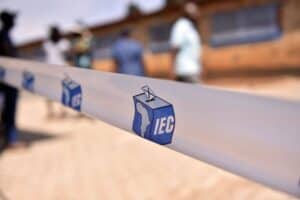The ANC is doing as badly as expected in the election, the MK party and the DA are doing better than expected – what can South Africa expect?

As the election results trickle in, South Africans are starting to wonder what the various outcomes will look like once all the results are announced.
Who will the ANC team up with? What will be the role of the smaller parties? And where will uMkhonto we Sizwe (MK) party end up?

LIVE interactive map, latest news, multimedia and more!
View MapIt is difficult to predict who will still be friends or enemies after the election, but Oxford Economics Africa set up four different scenarios and predict what each outcome will mean for the economy.
While the scenario of the ANC and friends seemed likely, it looks increasingly less likely as the ANC was only at 41,84% on Friday afternoon, while the MK party did not fade away. Instead, former president Jacob Zuma’s party stood in third place at 12%.
The second scenario, for the ANC to go into coalition with the EFF, looked more likely on Friday afternoon, as the ANC had barely more than 40% of the votes.
The third scenario of a coalition between the ANC and the DA, also looked quite likely considering the ANC’s performance.
By Friday afternoon it was clear that the fourth scenario of the Multi-Party Coalition winning an outright majority, would not materialise.
ALSO READ: Post-election social unrest looms over SA – economist
Scenario 1: ANC and friends
In this scenario, the ANC wins between 46% and 49% of the vote at national level, losing its outright majority for the first time since 1994.
Now the once-unassailable liberation party is forced to work with small, constituency-based parties.
It pulls in these smaller parties, such as the IFP, Patriotic Alliance (PA), African Independent Congress (AIC), Good and Al-Jama’ah, to form a national government.
The ANC also loses its majorities at the provincial level in Gauteng and KwaZulu-Natal and stays out of power in the Western Cape, where the DA retains its majority.
In KwaZulu-Natal, the ANC agrees with the IFP, as at national level, which results in a stable coalition.
Ex-President Jacob Zuma’s uMkhonto we Sizwe (MK) party is reduced to a small caucus in the provincial assembly and soon disappears from the national conversation.
In Gauteng, the ANC cannot obtain a majority without the assent of the EFF, making for an unstable government in the country’s most populous province.
Its national-level coalition agreement obliges the ANC to give a handful of ministerial positions to the smaller parties but requires no drastic move away from the ANC’s policy direction as adopted at its last national conference in 2022.
On the economic front, there will be slow progress towards fixing problematic state-owned enterprises (SOEs) and greening the energy mix, but power cuts remain a problem.
The election result will not shock the Rand, but lofty international oil prices and El Niño will keep inflation high and it will decline only slowly in the following years.
The South African Reserve Bank (Sarb) will hold rates until the third quarter of 2024.
Supply-side constraints will limit real gross domestic product (GDP) growth to 0.7% in 2024 and 1.4% in 2025.
High inequality and social polarisation elevate the risk of protests and unrest, with political violence risks above the African median.
ALSO READ: ANC/EFF coalition will see SA’s political-economic risk profile deteriorate
Scenario 2: ANC and EFF
In this scenario, the ANC sees its share of the vote drop to 40% and an arrangement with smaller parties is no longer enough to give it a legislative majority.
It must make a deal with one of the two main opposition parties, the EFF or the DA and chooses the EFF.
The ANC-EFF coalition has over 230 seats in the National Assembly and is free to appoint the president and government that the member parties agree on.
After some posturing and threatening, the ANC votes for the EFF’s choice of National Assembly speaker, in return for the EFFs’ vote for President Cyril Ramaphosa to serve or, at least, start a second full term as president.
The Red Berets demand and obtain positions in the economic cluster to advance their agenda of using the state to drive development and create jobs.
The ANC-EFF coalition is replicated in Gauteng and KwaZulu-Natal, while in the Western Cape the partnership, along with smaller parties, ousts the DA.
The EFF leaves most of the governance to the ANC, but prioritises a few policies, in alignment with the more statist faction within the liberation movement.
The relationship with the private sector becomes more adversarial.
The first economic effect of the news that the ANC and EFF are forming a coalition government is seen on currency markets in the form of a selloff of the Rand.
The Rand/dollar exchange rate starts to weaken in the second quarter of 2024 and briefly breaches the R21.5/$ level in the third quarter of 2024.
The weaker currency leads to fuel price increases and transport inflation moves inflation up steadily. Oxford Economics Africa’s forecast in this scenario is for inflation to average 5.6% in 2025, compared to 5.0% in its baseline forecast.
While political violence, polarisation and protests rise under an ANC-EFF coalition, the difference is small compared to the baseline.
ALSO READ: ANC/DA coalition: better politically/economically; risk of unrest higher
Scenario 3: ANC and DA
The ANC, having won only 40% of the vote, decides to make a deal with the party that has been the official opposition for 25 years: the liberal DA.
Despite historical animosity, the ANC’s and DA’s leaders convince supporters and internal stakeholders that a tie-up is a best-case scenario for the parties and the country.
Ramaphosa continues as president but careful haggling over cabinet positions delivers an executive that allows both parties to claim victory.
The focus shifts to boosting economic growth as the DA demands greater private sector participation and economic liberalisation. Areas of major contestation are avoided, as best possible, to give the government time to settle in.
In this scenario, the macro outcomes are better than in the baseline forecast of Oxford Economics Africa. It is its best-case scenario from the macroeconomic point of view.
The first effects are those of investor sentiment: the Rand strengthens throughout the second half of the year, while bond yields drop as investors’ opinion of the fiscal outlook improves.
Second-phase effects take shape in more disciplined government spending. The fiscal deficit is narrower than in the baseline, although social spending obligations make excessive austerity unplayable and as a result, the gross government debt to GDP ratio grows more slowly and stabilises sooner.
The inflation outlook is for higher inflation than baseline in the medium term as hotter activity exerts a demand effect, but lower than baseline in the longer term as capital inflows remain at stable levels.
Political-economic risks are better than in the baseline scenario, thanks to the rosier real GDP growth outlook and cleaner governance but by contrast, political regime risk is higher than in the baseline, as messy intra-coalition bunfights could lead to votes of no confidence and potential coalition collapses.
The risk of protest and unrest is also higher.
ALSO READ: Multi-Party Charter winning election a long shot, could lead to unrest
Scenario 4: Multi-Party Charter (Moonshot pact) wins election outright
The centre-right opposition to the ANC, united in a coalition around the DA, secures enough National Assembly seats to form a majority and govern without the ANC or the leftist pan-African parties.
In light of past election results and recent polling, this outcome is the least likely of the four scenarios to materialise.
The parties in the MPC collectively got a third of the vote in the 2021 municipal elections, so winning a majority this year would require a major shift in voter behaviour.
That is why DA leader John Steenhuisen originally referred to a ‘Moonshot Pact’.
On economic policy, the MPC is committed to smaller government, greater private sector participation and strong protection of ownership rights.
Macro outcomes are positive. Widespread market euphoria shows investors are glad to see the back of the ANC and local assets rally strongly across the board. The 10-year bond yield drops into single digits in the first quarter of 2025.
The Rand rallies from oversold levels, which moderates fuel prices and tempers inflation.
Investment is the big driver of growth and also means exports are higher than in the baseline.
Real GDP growth accelerates to 2.8% in 2026 and averages 2.4% per year between 2026 and 2030.
Political regime risk is higher than in the baseline scenario. The inexperienced and sometimes fractious incoming government faces pushback from ANC lifers in the bureaucracy and an unruly parliament.
The risk of protests, trade union strikes and unrest is severely elevated. However, risks should dissipate over time.






